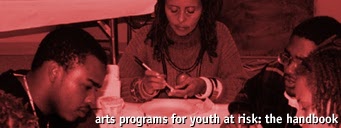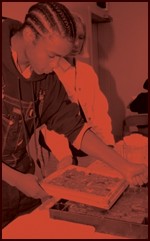


Design Your Training SessionsIs designing your training session a job you can do yourself, or do you need a training consultant? Consider the number of artists you will need to hire (based on the size of your program), your program goals, resources for artist training within your community, and the resources your partners bring to the program. See pages 90-93 of the full chapter PDF for details about how the YouthARTS sites designed their training sessions. Who should be involved in the training?Too often, discussions about training focus solely on artist training. We've found that that everyone who works with the youth needs to be trained in team building, communication skills, and organizational skills. The team, while different at each of the three YouthARTS sites, consists of everyone who works to develop and run the youth arts program. Ideally, all members of the team should be trained together to better learn each other's language, point of view, and the strengths each brings to the team. The training period is also the ideal time to define each team member's roles and responsibilities within the art program. Content and format of the training sessionsEffective training provides information on:
While general knowledge of at-risk youth and the risk and protective factors that affect them is very important, a thorough understanding of the specific youth population that your program will serve is critical. It is crucial to "know the population you will be working with." We can't stress this point enough. All three YouthARTS sites recognized that successful training programs teach partners how to communicate effectively with at-risk youth and how to resolve conflicts and manage disruptive behaviors in the classroom. While each site took a somewhat different approach toward teaching these critical skills, all stressed the idea that one of the best ways to deal with conflict is to create a positive and consistent climate in which youth feel like they are part of a team producing an art project. A well thought-out format for training sessions is an important part of ensuring the success of the training.
More Resources
Conflict managementWhile the content of the Youth Arts Public Art training did not explicitly cover conflict management, at the beginning of each of the projects, all participants—the youth, artist, and probation officers-established boundaries for the program, which laid the groundwork for effective conflict management. See pages 97-105 of the full chapter PDF for more about how each YouthARTS site approached conflict management. |
|
||||||||||||||||||||
